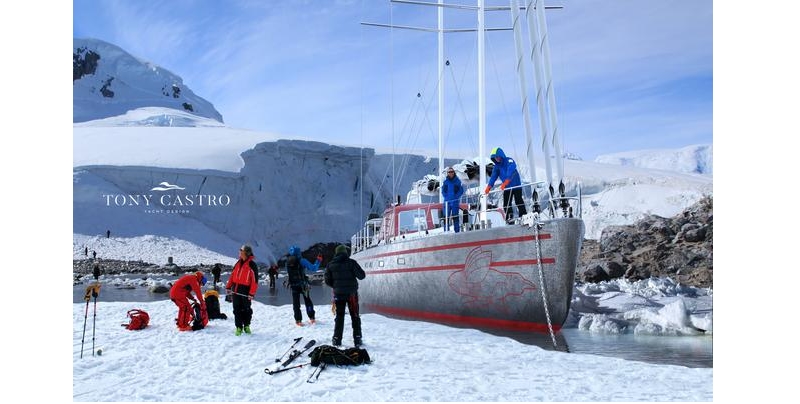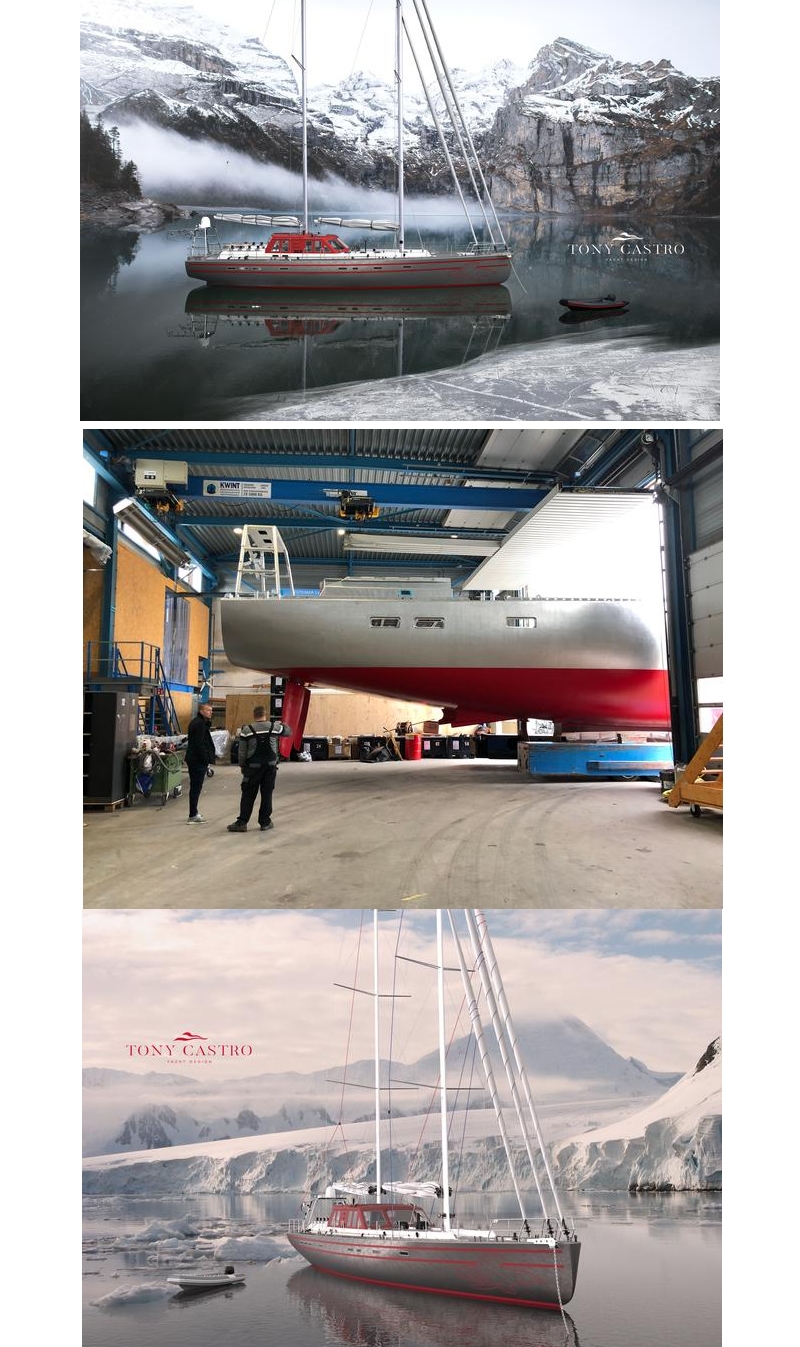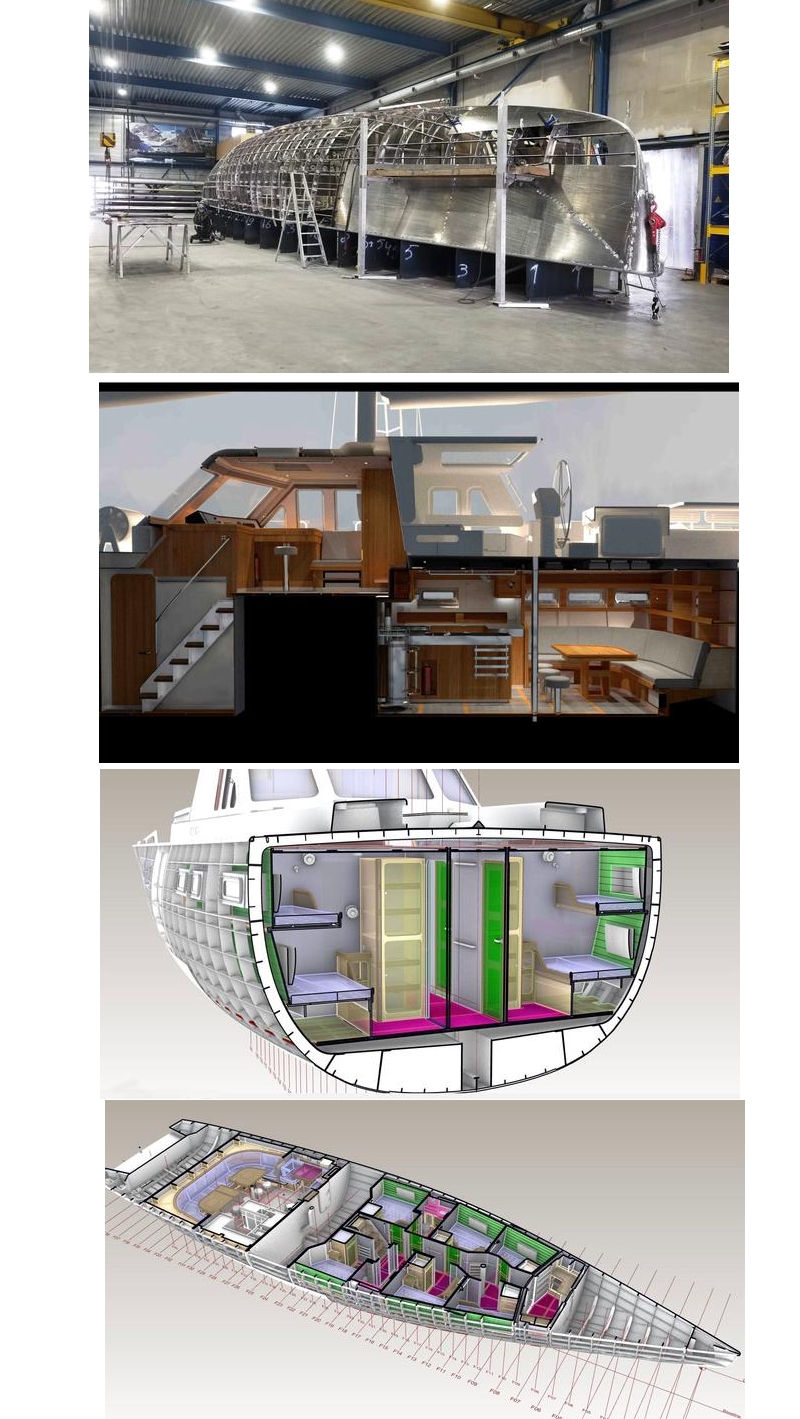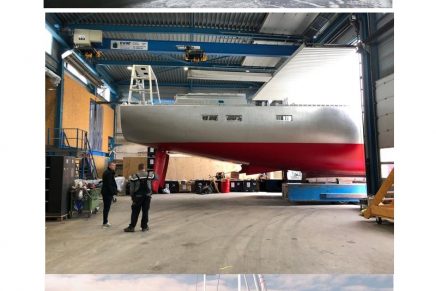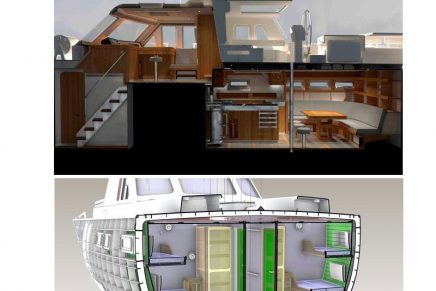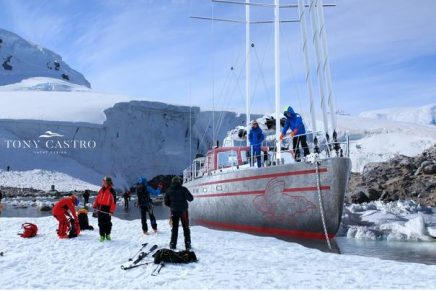Pelagic 77 – one of rare breed of sailing yacht designed for navigating in polar seas.
Design by Tony Castro for round-the-world racer and polar adventurer Skip Novak, this sailing yacht was conceived and built to specific criteria: enhanced autonomy, ease of handling, simple sail plan, reliable onboard systems, robustness and workshop repairs station.
The 23.5-metre Pelagic 77 is a very special sailing yacht for high latitudes built at KM Yachtbuilders in the Netherlands.
Round-the-world racer and polar adventurer Skip Novak is widely considered a world authority on high-latitude sailing. His specialist vessel, Pelagic Australis, was designed by yacht designer Tony Castro for operations in remote polar regions. The Pelagic 77, in build by aluminium specialists KM Yachtbuilders, is very much an evolution of that vessel, which since her launch in 2003 has covered thousands of ocean miles working as an expedition charter yacht in both the Arctic and Antarctic, including an attempt on the NW Passage.
The yacht is scheduled for completion before the end of the year when she will be put through her paces in the northern high latitudes.
The bare aluminum hull and deck structure is reinforced to withstand navigation in brash ice without deformation. The bamboo interior joinery and furniture is comfortable yet hard-wearing and easy to maintain. Able to sleep 12, the yacht is designed for both private use and commercial chartering.
The schooner sail plan provides manageable sail handling in high winds and rough seas; and also redundancy, as the two mainsails are of equal size – the aft sail will fit on the forward mast. The robust fixed keel with solid aluminium machined centreboard allows for safe navigation in shoal waters.
Standout features that highlight the yacht’s explorer vocation include: twin engines, with well protected propellers and a workshop for running repairs that can be made at sea.
The sturdy gantry frame on the transom will carry an expedition RIB (a second RIB is stowed on deck) as well as the sat-nav antennae so in case of damage to the Axxon carbon masts, the yacht will not lose navigation and satellite communication capability. It also doubles as mainsail traveler track foundation. A diesel stove in the spacious aft salon/dinette/galley provides efficient, reliable and comfortable heating to combat freezing temperatures.
During construction special attention was devoted to the insulation to combat the cold and condensation.“Skip, Tony and KM had already proved themselves to be a winning team, so why look any further?” said Peter Wilson. “As Skip is often at sea on expeditions, he needed a wingman on the ground to follow the project and MCM was delighted to oblige. An expedition sailing yacht has to be designed and built to specific criteria, including enhanced autonomy, ease of handling, a simple sail plan and reliable onboard systems – and robust. The Pelagic 77 has been conceived with all these factors in mind.”
“This project represents a number of firsts for MCM,” added Wilson. “Although I’ve known Tony for many years and Skip since our maxi racing days in the ‘80s, we’ve never had the opportunity to work together. Additionally, it’s also our first collaboration with KM Yachtbuilders, who have carved out a solid niche in building high quality, rugged, aluminium explorer yachts. This is a collaboration amongst a coterie of experienced people that oozes a shared enthusiasm to achieve something exceptional”
With all the aluminium work now complete and the interior constructed in the adjacent joinery department, the next stage of construction is to run the cables, piping, ducting for the mechanical, electrical, hydraulic systems, then start the interior outfitting followed by installation the deckhouse.

